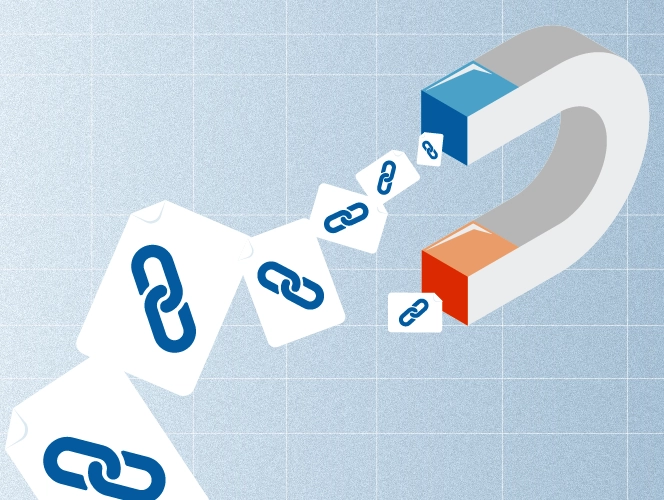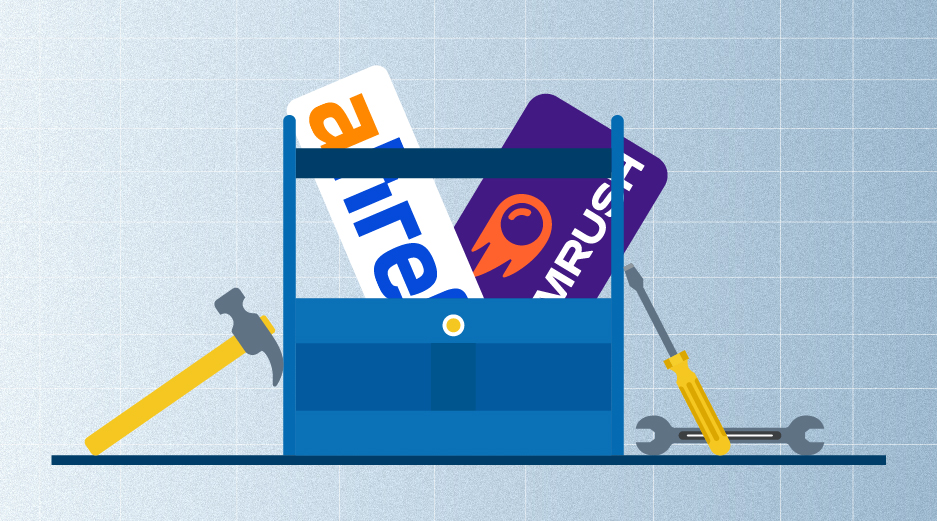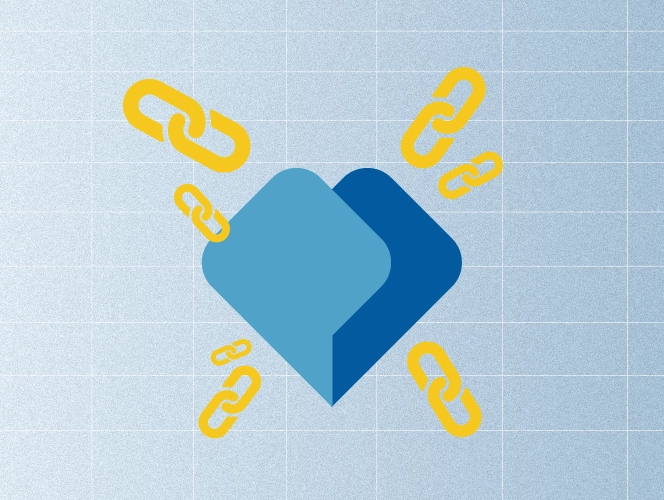Think link building is all about getting a bunch of backlinks? Not sure. It’s about being selective, and that starts with link prospecting.
Finding the right websites to target can make or break your link building campaign. Don’t worry, though. We’re here to walk you through it step by step, so you can find valuable opportunities and build backlinks that drive rankings.
But let’s start with the basics: what exactly link prospecting is, and why it matters?
What is Link Prospecting?
Link prospecting is the process of finding relevant websites to reach out to for your link building efforts.
If done right, you’ll find a list of good websites to get backlinks from. But if you reach out to the wrong ones, you will end up building links from irrelevant sources, which may seriously hurt your SEO.
In short, you should focus on the right websites from the start for a more strategic and effective link building campaign and results.
Why is Link Prospecting Important?
Here’s why link prospecting is important:
- Boost Your Rankings with Relevant Backlinks
When you get relevant backlinks, you improve your website’s rankings in search results. This means more visibility for the website, which brings a regular flow of visitors from search engines.
As more people come across your website through search engines, you have a better chance of reaching more people and growing your audience.
- Grow Trust and Authority
Backlinks from trusted and reputable sources signal to search engines and users that your website is a trustworthy and credible source of information․ Plus, it boosts your reputation and allows you to establish yourself as an authority in your industry.
- Drive Referral Traffic
In addition to improving your search rankings, backlinks from relevant sources also drive referral traffic. When visitors click on a link from another website to yours, you gain new visitors who might not have discovered your website otherwise, pretty nice, yes?
In fact, these visitors can turn into loyal followers or even customers, giving you a significant increase in both traffic and conversions.
- Build Valuable Relationships and Open Networking Opportunities
It’s also about creating meaningful connections within your industry. By reaching out to website owners, you can build long-term relationships and strong partnerships.
These connections can help expand your network and open up new link building opportunities that will positively impact your website’s SEO.
Now that you know why link prospecting matters, it is time to jump into the main steps of finding relevant websites for backlinks
Let’s start!
How We Do Link Prospecting in 7 Easy Steps
Before you start reaching out, you need a reliable plan, and that’s where a solid link prospecting strategy is needed, helping you save time and stay focused throughout the campaign.
We’ve simplified it for you—here’s how it works, step by step.
Step 1: Use Ahrefs to Find the Right Link Opportunities
The first thing we do—always turn to Ahrefs, one of our favorite link building tools. We begin by using the “Content Explorer” to search for content that fits our client’s goals. But here’s the key—we don’t just type in a few keywords and hope for the best. We get really specific with our searches.
We use a custom prompt: inurl:/blog inurl:https:// “target keyword 1” OR “target keyword 2” OR “target keyword 3” to make sure we’re only getting the most relevant results, like in the example below.
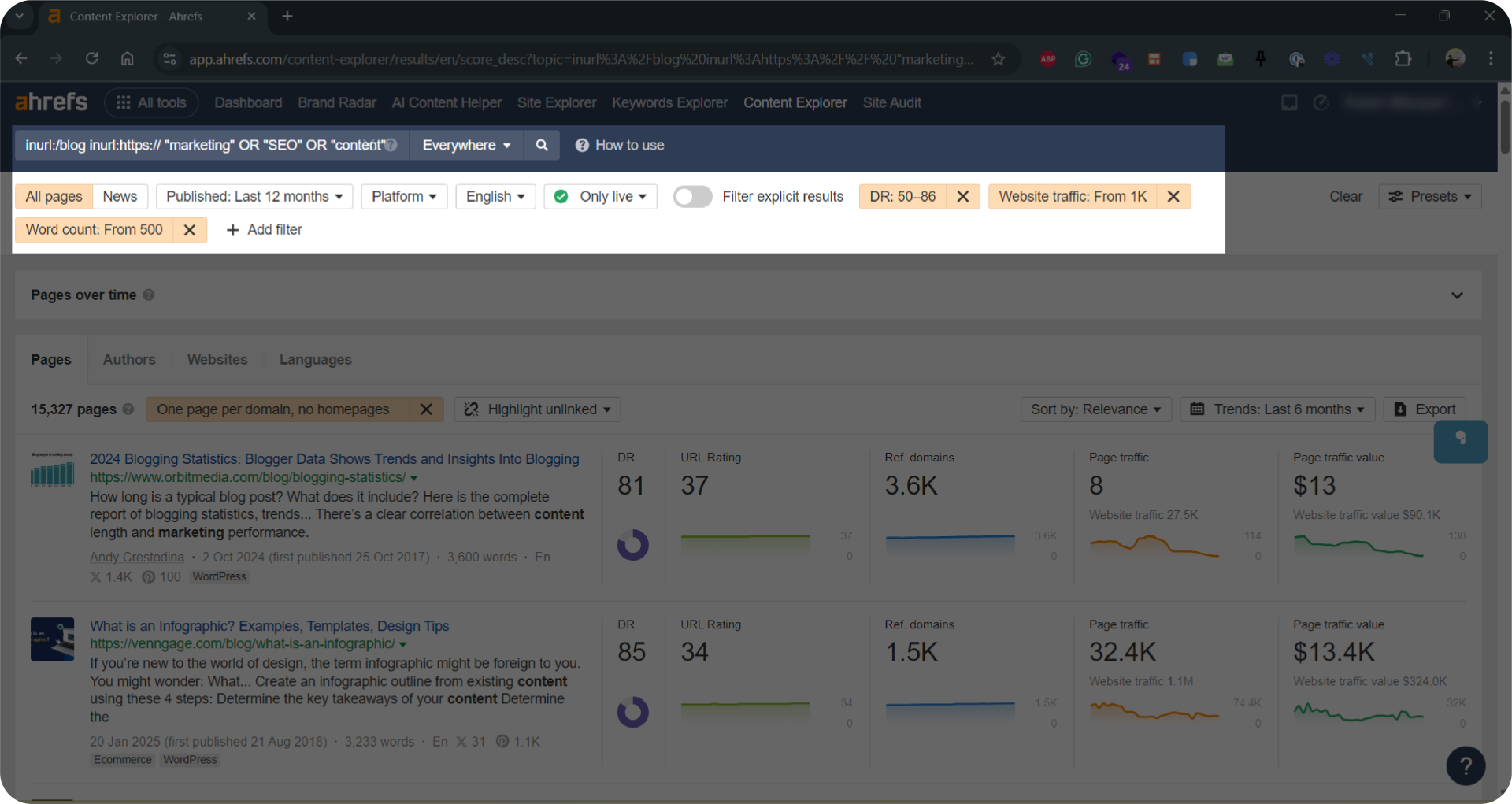
Next, we apply a set of filters to narrow down our search. We look for pages with:
- DR of 50+
- At least 1,000 visitors a month
Why? Because these websites have strong credibility and get consistent traffic, just what we’re looking for.
We also make sure the content is at least 500 words long to ensure it’s a blog page and not a service page.
Step 2: Clean Up Domain Data
Now that we’ve gathered some data, the next step is to clean things up.
This step is important because we want to make sure we’re working with the most valuable domains. We take the information we’ve collected and organize it into a clear, well-structured list.
Next, we apply filters to this data based on the data we already have. This helps us refine our list and remove any domains we don’t want to reach out to.
Some domains are marked as “no list data”—these are websites we’ve already decided not to target for various reasons. For example, we might avoid targeting competitors or websites from niche websites we don’t build backlinks from (e.g., gaming). So, by filtering out these domains, we ensure that our outreach efforts are focused on the right targets and are aligned with effective link prospecting strategies.
Step 3: Identify the Right Websites
For this step, we get a little techy with the help of a bot our development team created just for us. This bot is so helpful in the process. We use it to quickly find keywords that align perfectly with what we’re targeting. These keywords later help us identify relevant websites that meet our link building needs and goals.
- Good ones: Keywords like software, platform, or solution.
- Bad ones: Keywords like beauty, sport, health, or news that don’t match our target niche.
Once it’s done, the bot organizes the websites into two different groups:
- Websites that are “OK” for us: These are the websites that meet all the right requirements, including relevancy and metrics.
- Websites that are not “OK” for us: These are the ones that don’t fit our criteria or aren’t a good fit for outreach.
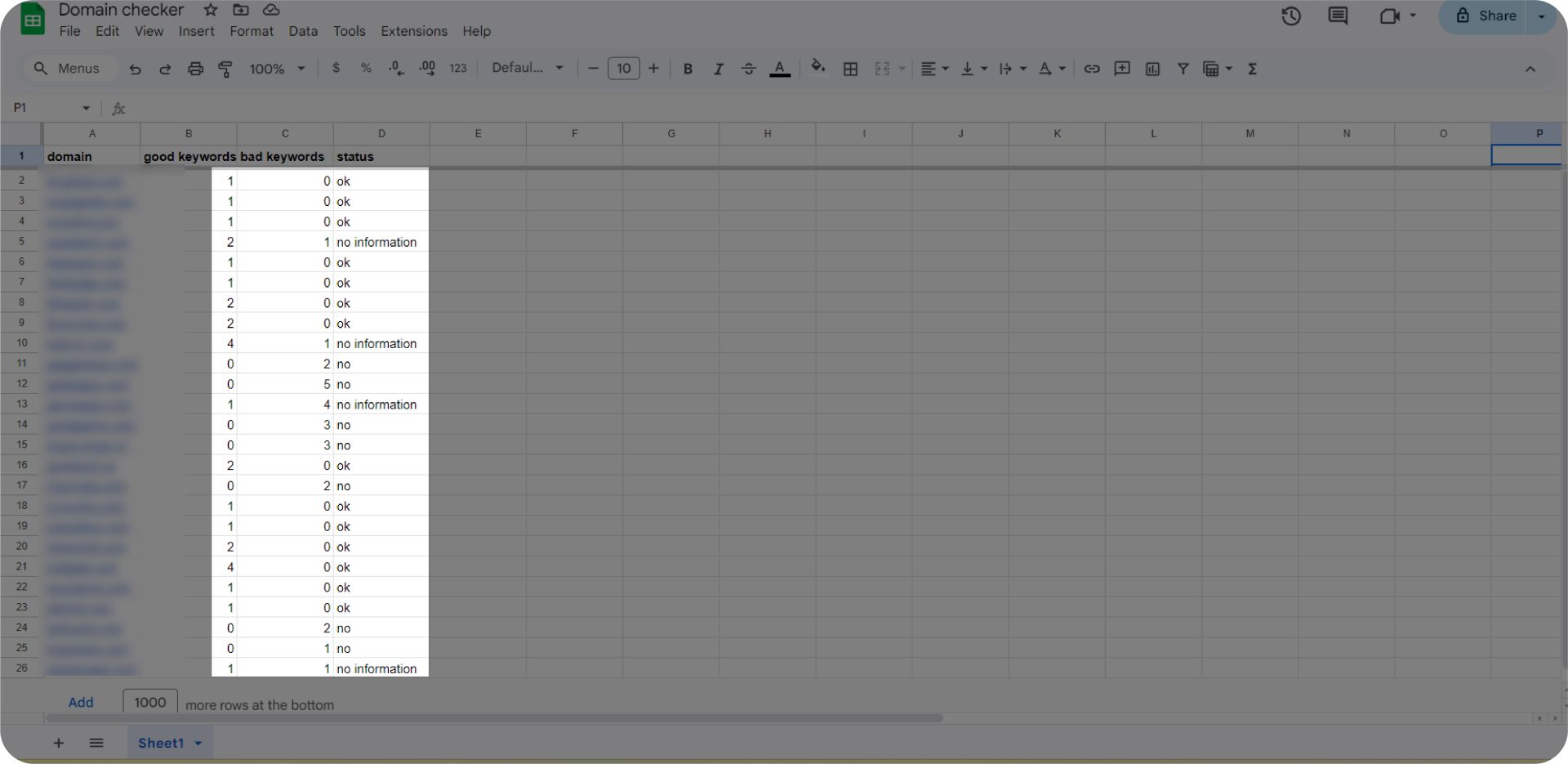
So, with the help of link prospecting tools, we make sure we’re only reaching out to the right websites.
Step 4: Classify Websites by Niche
Once we’ve cleaned up our list, it’s time to bring in our handy helper—for this, we’ve built our GPT-powered bot.
In this step, we use the bot to go through the list of websites we’ve already cleaned up. It helps us figure out the type of website (whether it’s SaaS or not), as well as the niche, including software development, email marketing, and more.
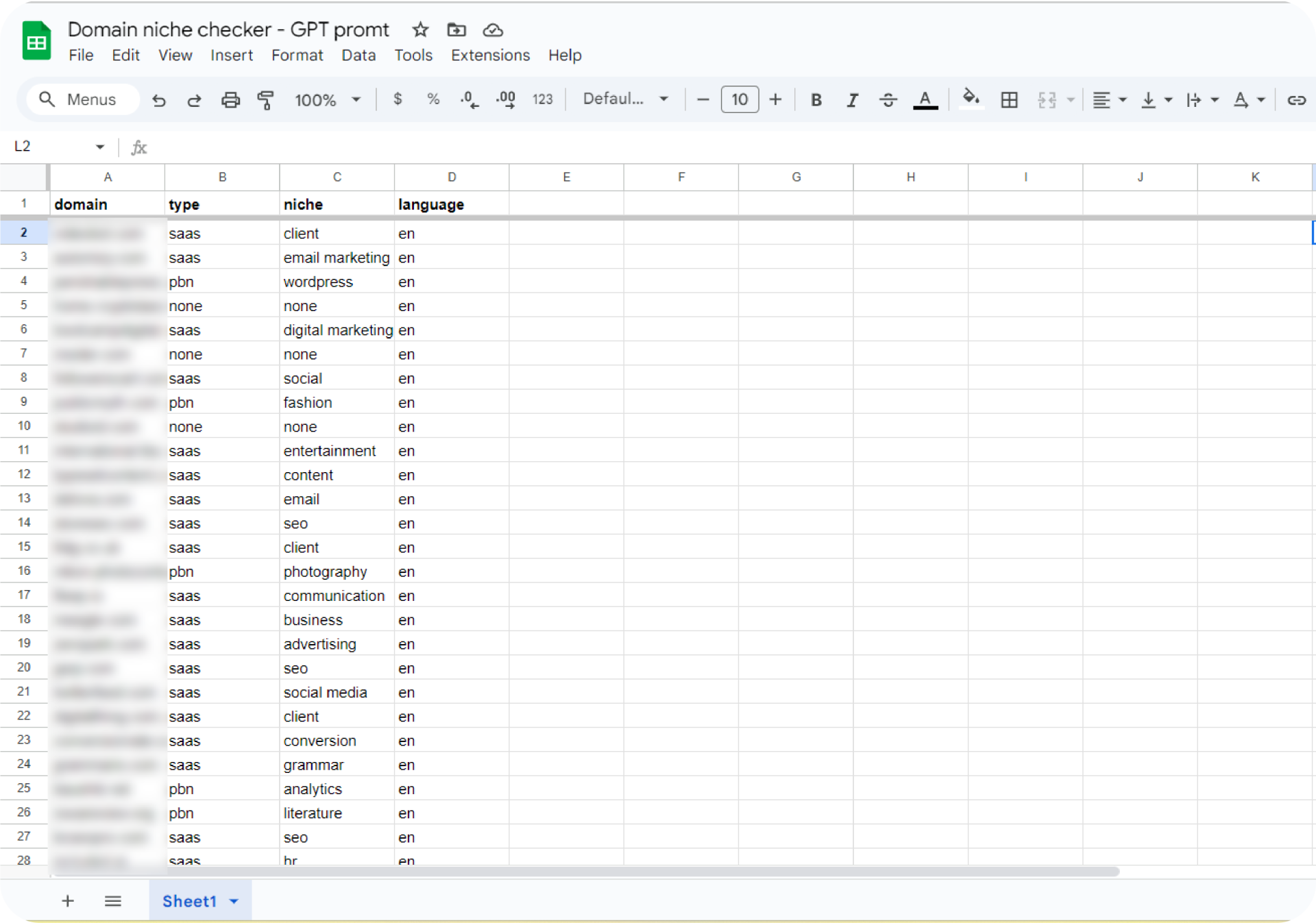
Step 5: Find the Right People On LinkedIn
Now that we’ve filtered our list and know exactly which websites we want to reach out to, it’s time to find their LinkedIn pages. This step helps us understand more about the company—what they do, how big they are, and sometimes even who’s on their team.
We collect the LinkedIn company URLs for each website so that later, when we’re doing outreach, we can personalize them even more. Once we have the company’s LinkedIn page, we search for the people who are most likely to care about our outreach.
We’re talking about positions like:
- Link builder
- SEO Specialist
- SEO lead
- Content Marketing Manager
- Digital Content Editor
- Digital Marketer
- Marketing Specialist
These are the people who understand the value of good links and are essential when looking to find high-value backlink opportunities.
After identifying them, you can use an email permutator tool to figure out their possible email addresses.
It takes their name and company domain and gives us different combinations that might be their real email. Once you’ve verified these addresses, you can use an SPF generator to improve your email deliverability and bypass spam filters during email campaigns.
Step 6: Send Emails
Outreach templates are a great starting point, but real results come from personalization. So, now that we have the right people and their emails, it’s time to send the outreach!
Here’s our approach:
- Make it personal: We don’t send the same message to everyone. We check out their website or blog, learn about what they care about, and mention that in the email. Using their name and showing real interest goes a long way.
- Add a CTA: Ending your email with a strong call to action will encourage your link prospects to take the desired action.
- Follow-up message: If they don’t respond, we give it a few days and then send a friendly follow-up. Sometimes that second email does the trick!
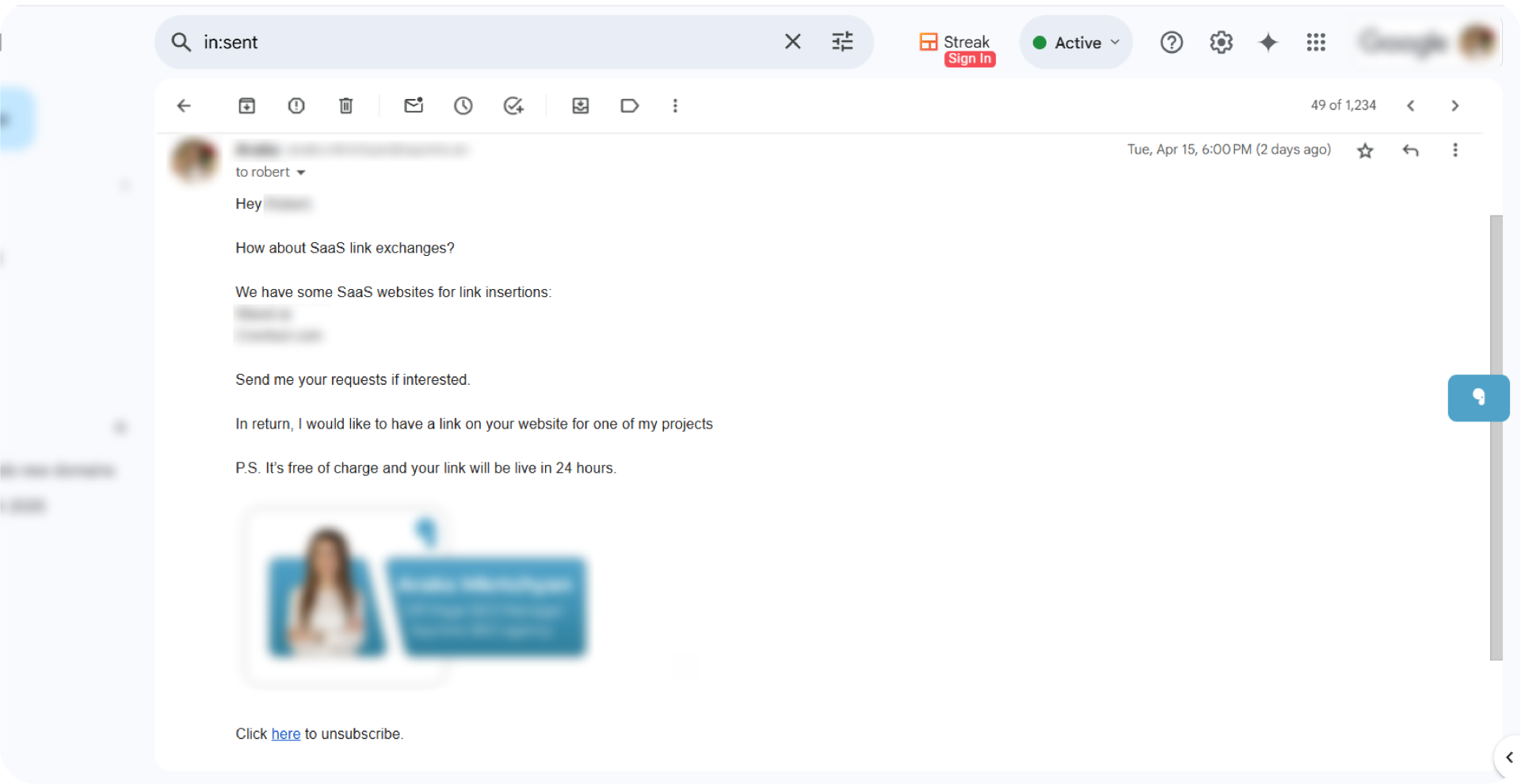
As you can see in this screenshot, one of our link builders keeps it personal and friendly—just the kind of outreach that gets real replies.
So, this process is key to a successful link building outreach campaign that helps you build valuable connections and relevant backlinks.
Final Thoughts
So, there you have it!
By following the steps we’ve shared, you’ll be able to build a foundation of backlinks that can actually help your website grow.
Remember, it’s not about the quantity of links—it’s the relevancy that really counts.
And hey, if you have any questions or struggle to find the right websites for link building, feel free to reach out to us—we’re always here to help!
FAQ about link prospecting
What is link prospecting?
Link prospecting refers to finding relevant and reputable websites to reach out to for backlinks.
Is LinkedIn good for prospecting?
Yes. LinkedIn is good for link prospecting, as it’s a professional platform, allowing you to connect with relevant people for your link building efforts.

Quiz Time
Let's put your knowledge to the test.
Leave your email below to get a SayNine certificate!
Are you sure?

